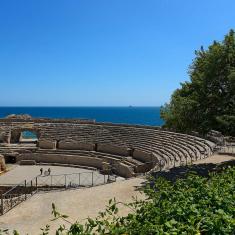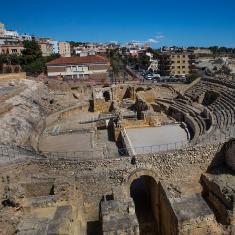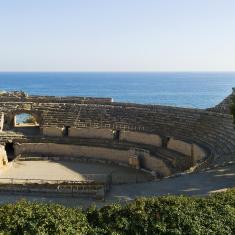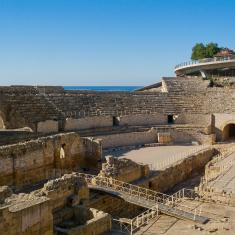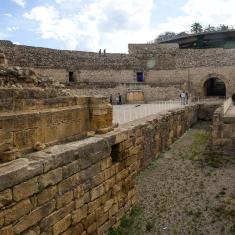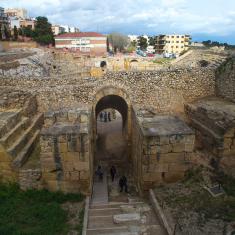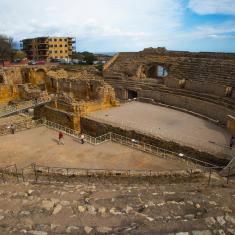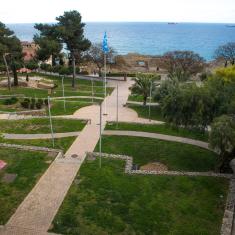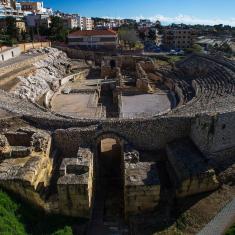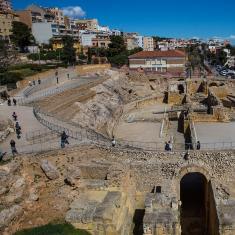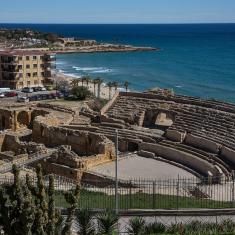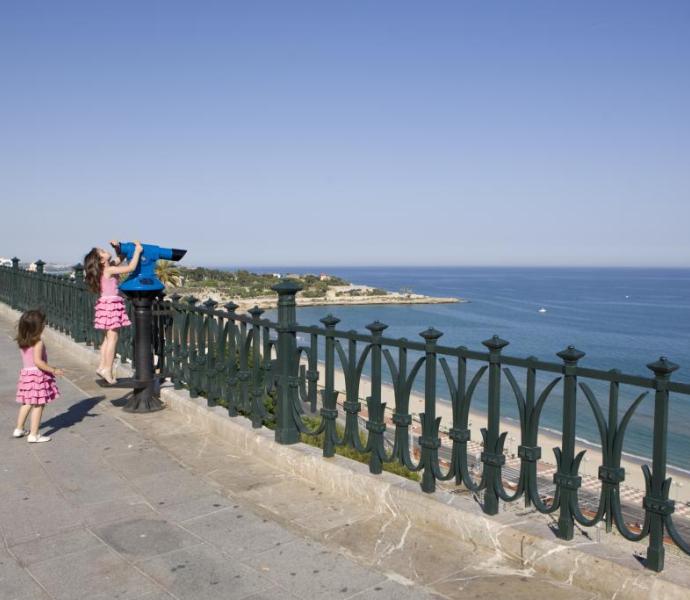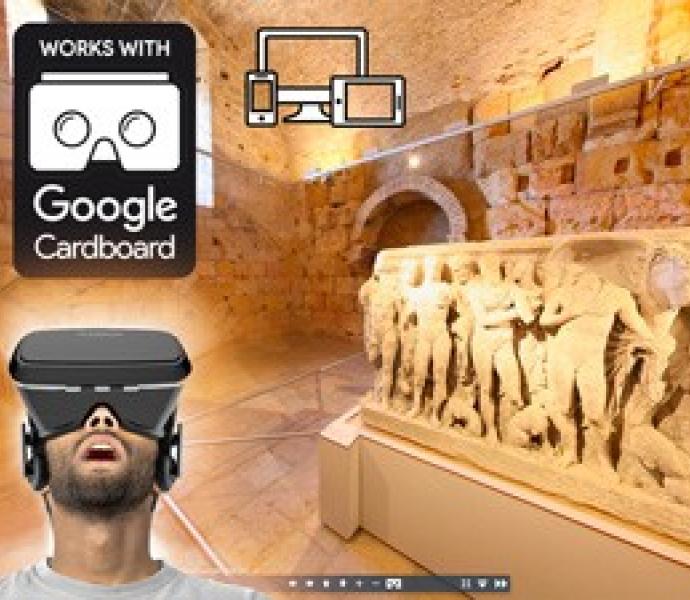The Amphitheatre was used for entertainment, including fights between wild beasts, races, public executions and gladiatorial combat. Tarraco’s amphitheatre was built at the turn of the 2nd century A.D. and underwent alterations in 221 A.D., as recorded in the 140-metre inscription that crowns the podium, the longest such inscription in the empire. Today, a heavily eroded section of the northern stands carved directly into the rock survives, as does a section of the southern stands, supported by concrete vaults. The Amphitheatre was also the site of the martyrdom of Saint Fructuosus and his deacons in 259 A.D. To commemorate the event, a Visigoth basilica was built on the site at the end of the 6th century, over which the medieval church of Santa Maria del Miracle was subsequently established in the 12th century.
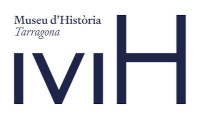
Monday: closed / Tuesday to Friday: 9:30 a.m. - 9:00 p.m. / Saturday: 10:00 a.m. - 9.00 p.m.
10:00 a.m. - 3:00 p.m.
Monday: closed / Tuesday to Friday: 9:00 a.m. - 6:30 p.m. / Saturday: 9:30 a.m. - 6:30 p.m.
9:30 a.m. - 2:30 p.m.
Opening hours and price of admission to museums and monuments (7 January-23 February 2025)
Opening hours and price of admission to museums and monuments (24-28 February 2025)
Opening hours and price of admission to museums and monuments (1 - 31 March 2025)
Opening hours and price of admission to museums and monuments (1 April-31 May 2025)
| Mondays open: Cathedral, Tarragona Biblical Museum, Mèdol Quarry, Francolí River Paleochristian Complex and Chapel of St. Paul |











